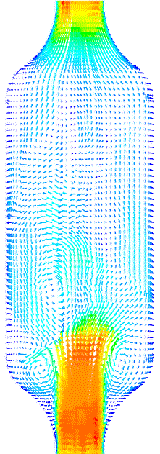
Passive fire protection is a vital component of any fire safety strategy. It is built into the structure of a building to safeguard people’s lives and limit the financial impact of damage to buildings and their contents. It does this by:
Limiting the spread of fire and smoke by containing it in a single compartment
Protecting escape routes for essential means of escape
Protecting the building structure thereby ensuring it’s sustainability
Passive Fire Protection is built into the structure to provide stability and into walls and floors to separate the building into areas of manageable risk – compartments. These areas are designed to restrict the growth and spread of fire allowing occupants to escape and offering protection for firefighters. Such protection is either provided by the materials from which the building is constructed, or is added to the building to enhance its fire resistance.
Our Testing Standards
BD 2569 - LPCB/BWF approval scheme for fire protected stairs
BS 476-4 Fire tests on building materials and structures. Non-combustibility test for materials
BS 476-21 Fire tests on building materials and structures. Methods for determination of the fire resistance of load bearing elements of construction
BS 476-22 Fire tests on building materials & structures. Methods for determination of the fire resistance of non-loadbearing elements
Class O - Reaction to Fire (RTF) classifications for materials and products to the Building Regulations 2010, Fire Safety, Approved Document B, 2006 Edition incorporating 2010 and 2013 amendments. Appendix A, Performance of materials and structures, paragraph 13.
EN 13381-3 Test methods for determining the contribution to the fire resistance of structural members - Part 3: Applied protection to concrete members
EN 13381-8 Test methods for determining the contribution to the fire resistance of structural members. Applied reactive protection to steel members
EN 13501-1 Fire classification of construction products and building elements. Classification using test data from reaction to fire tests.
ENV 1187 Test methods for external fire exposure to roofs, in order to ensure that roof covering and its supporting deck act as a protective barrier against fire from the outside of a building.
ISO 843-10 Fire resistance tests. Elements of building construction. Specific requirements to determine the contribution of applied fire protection materials to structural steel elements.
SD100 - LPCB approval requirements for products assessed for use in surface and sub-surface transport applications
NFPA290 - Standard for Fire Testing of Passive Protection Materials for Use on LP-Gas Containers.
UL1709 - Standard for Rapid Rise Fire Tests of Protection Materials for Structural Steel
FM1530 -Fire Department Connections
FM2111, 2131 - Fire Hose Assemblies/Couplings
FM1421 - Monitor Nozzles







